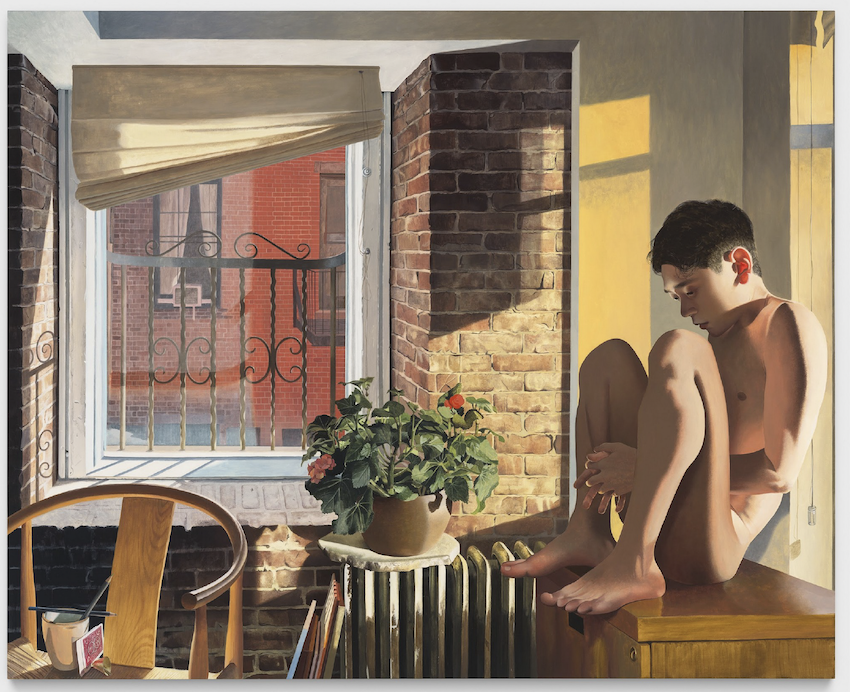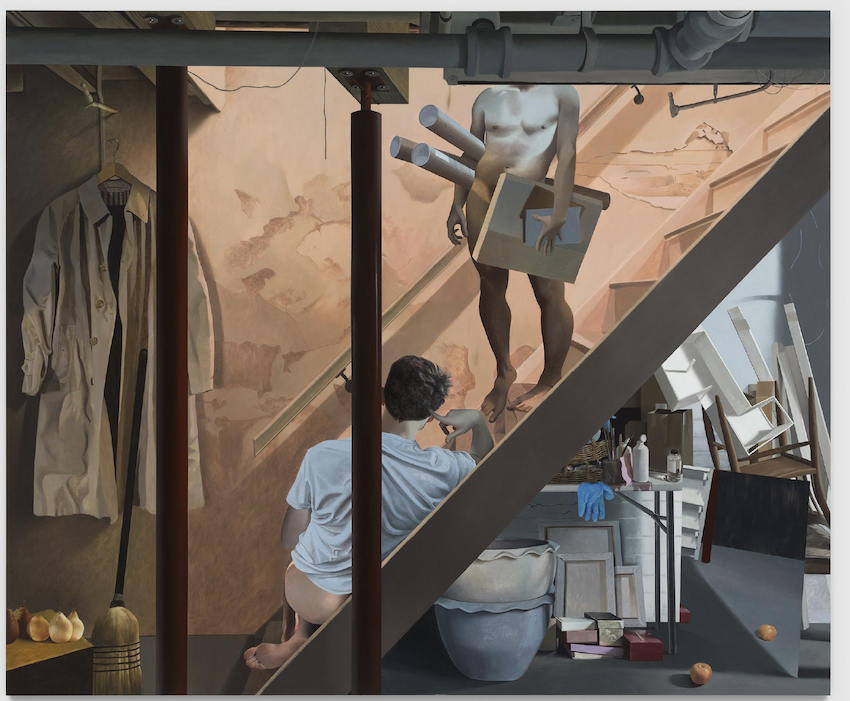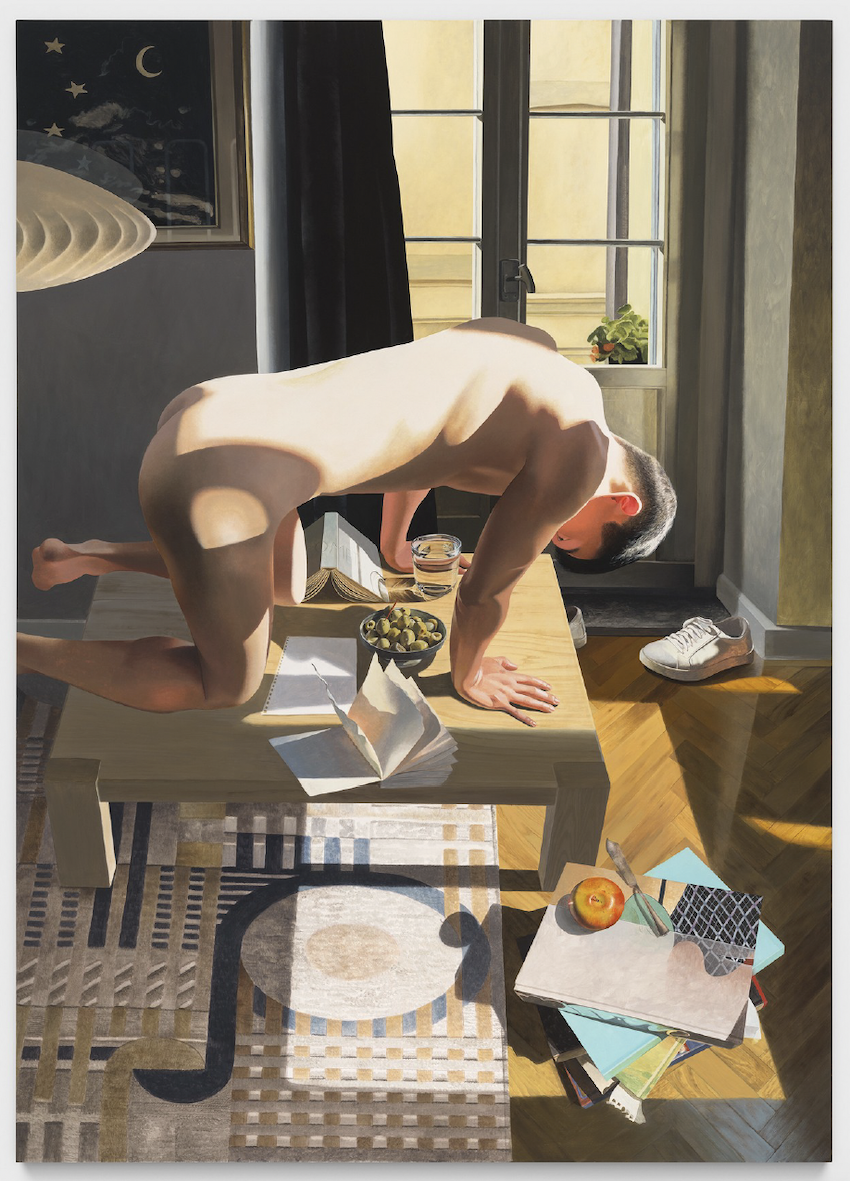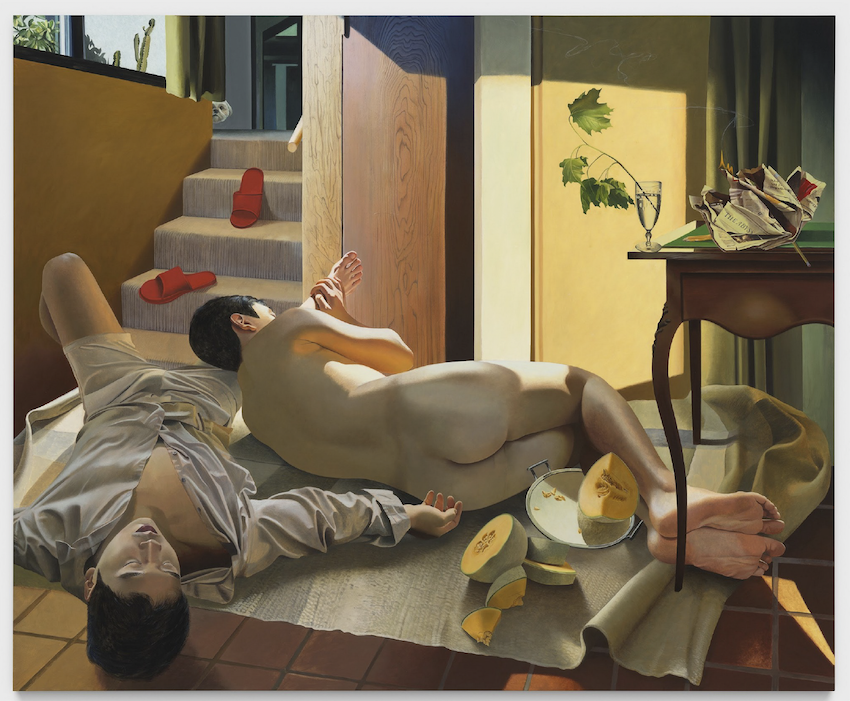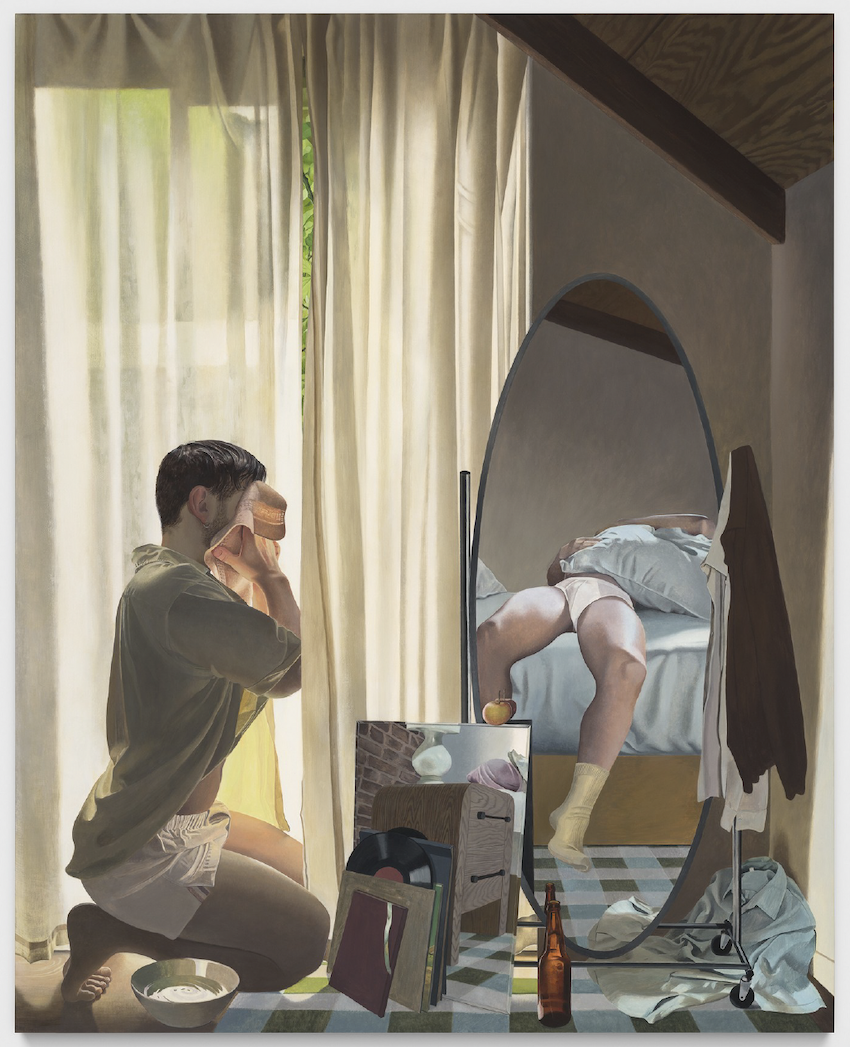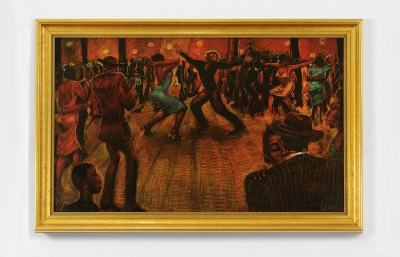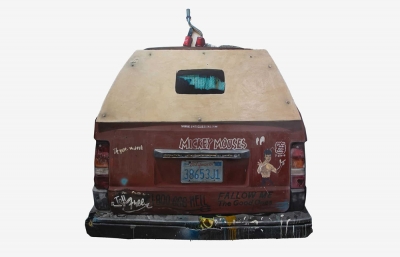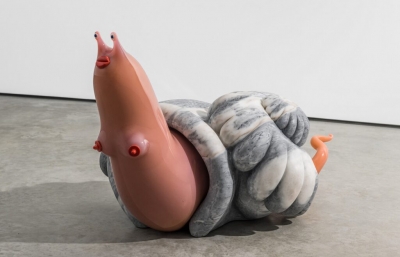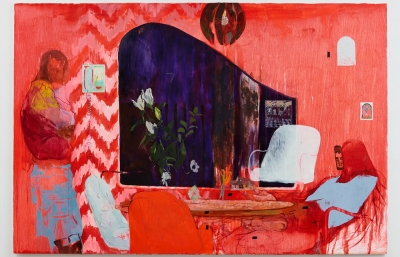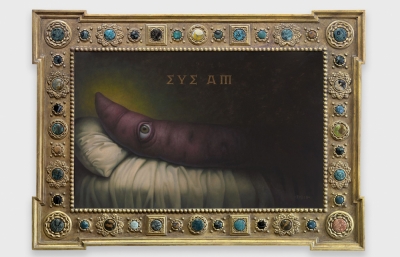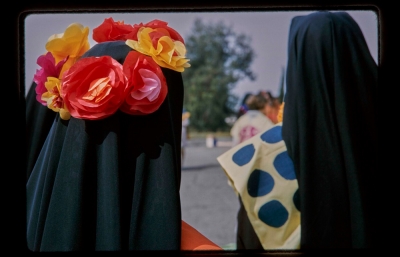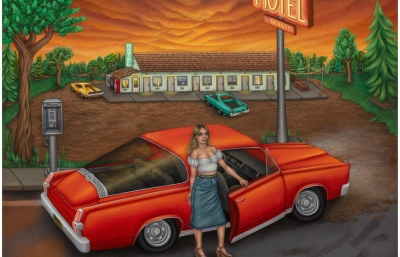Kyle Dunn's paintings are a tour de force and a tour of art history. I remember Dunn telling us a few years ago, "As I work half-autobiographically and half-fictitiously, sometimes people assume that what I am painting is one hundred percent earnest, when it is really leaning into fantasy or cathartic bombast. So, while autobiographical in origin, they are more about blowing those feelings up past life-size, to the point of comedy or tragedy." Perhaps I think of a tragic emotion in Dunn's work, the estrangement of lovers or the loneliness of modernity, but through a modernist and classical style, Dunn is opening up a whole universe of possibilities of cinematic painting.
Vielmetter notes something that is essential in understanding the works in this show: "The title “Devil in the Daytime,” which is also known as the Noonday Demon, stems from Biblical times, and is a monastic term that blames workday restlessness on the supernatural. Dunn saw parallels between this idea and the experience of painting in his studio, of working in isolation while also resisting the pressure to always be productive." It's a hyper-modern way of storytelling, as Dunn exists in an era where it appears everyone is productive all the time whilst in actuality, we haven't quite comprehended our addiction of sharing and watching to be an act of productivity or passive compliance. And I think here is where Dunn daydreams his characters into an almost in-between space of the centuries, an ode to a time when that act of daydreaming was of the mind and memory and not of the screen. —Evan Pricco



